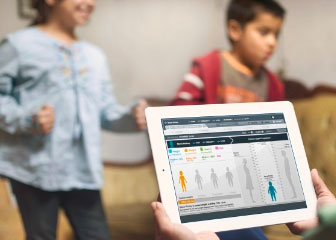ABA Therapy Is The Gold Standard:Experts have compared the results of many treatment modalities for Autism. Amongst all, ABA therapy has shown the most encouraging results. It is data driven and backed by over 40 years of scientific research. ABA therapy is widely documented in many academic journals. It uses basic principles of human behaviours to help increase socially desirable behaviours such as communication, social skills, academic skills, and independent living skills. It also helps to decrease undesirable behaviours such as self-injurious behaviours, aggression, and tantrums. |
|
Data. Data. Collected:A wise man once said, if you can’t measure, you can’t manage. A stringent data collection procedure is what sets ABA therapy apart from other therapies. This data is used to drive decisions on the child’s intervention program. If the data shows that the child is making progress, we move to a new task. If the data shows that the child is not making progress, we rethink the program and amend it so the child learns the skill. |
|
Breaking A Task Into Simpler Steps:Rome was not built in a day. Complex skills are not learnt overnight. Rather than overwhelm the child, we break a skill into smaller, simpler, more manageable steps and use positive reinforcement to encourage the child. This in turn helps increase the child’s confidence and motivation for learning. |
|
Teaching Through Play:As the saying goes, play is children’s work. It is a natural aspect of childhood and a learning tool for children. Through play, children gain many important life skills such as sharing and turn taking. They improve on language and motor skills and learn to work cooperatively with their peers. But play does not always come as naturally to children with ASD. This is why we structure and facilitate play. With additional support, children with ASD have the opportunity to learn these skills in a more naturalistic manner. We strive to make learning fun! |
 |
“One Size Does Not Fit All”:ASD is a spectrum disorder. No two children are exactly the same. Hence, we design intervention programs to meet the individual learning needs of each child. Rather than try to fit the child into the intervention program, we create intervention programs that fit the child. |
 |



